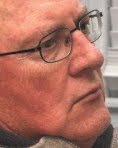
Fig. 1 shows a second order band pass filter that is designed to have a center frequncy of 2KHZ and is stable with transient signals or noise inputs. The schematic is the actual simulation schemtaice used including the biasing circuit as the basic circuit. Note that a practical value of 0.01UFD is set for the capacitors to start with but the R values are calculated as shown below and the calculated values are shown to 5 or 6 digits for use in the simulation but standard resistor decade values that are close will provide acceptable results.
We want this filter to have a maximally flat response in the pass band so the damping factor d is set to the square root of 2, as
d = ( 2 )^2 = 1.1412...
If we wanted a maximally flat time delay instead, such as might be required for an audio cross-over network, we would set d to the square root of 3 instead.
Once we have decided on d we can then calculate a gain that will be stable for the circuit. For an ordinary wide band pass filter, like the circuit in Fig. 1, we don't need a lot of gain and we need to be careful not to use too much gain as the filter may become unstable and ring on any kind of input transient, making it useless. We will use a standard formula to calculate the gain K that will work. We will treat the gain K as a positive value although the real gain is actually negative due to the inverting amplifier circuit we are using.
K = 3 - d = 1.5857
We can round off the gain to 1.59.
Now there is a criteria for setting the minimum value of the quality factor of the filter Q. Again, we don't want too high a Q for this simple wide band filter as the circuit may not then be time stable. The criteria is:
Q > ( K / 2 )^0.5 = 0.89
So what ever Q we choose it needs to be greater than 0.89. So lets try a Q = 1.
Also we set the center of the pass band to 2KHZ for demonstration.
Fo = 2000
Now we can calculate the resistor values for the filter:
R3 = Q / ( 2 * Pi *K * C * Fo ) = 1 / ( 2 * 3.14159 * 1.5857 * 0.01*10^-6 * Fo )
R3 = 5004.9
R4 = Q / (( 2 * Q^2 - K ) * 2 * Pi * C * Fo ) = 19409
From the equation for R4 we can see that 2Q^2 must be greater than the absolute value of K, and 2Q^2 cannot equal K, or R4 must be removed from the filter and then we have a different circuit and performance. I have found that including R4 makes a better filter.
R2 = 2 * Q / ( 2 * Pi * C * Fo ) = 15915.5
R1 is simply a dummy load for the op-amp and has no theoretical effect on calculations.
Simulating the circuit as shown in Fig. 1 with the Linear Technology LTC6244 rail-to-rail 5MHZ op-amp we have the following results:
Quite symmetrical band pass curve on a log of frequency vs voltage db scale with
Fo = 2KHZ
F low at -3db = 1.24KHZ approx.
F high at -3db = 3.3KHZ approx.
-20db at 20KHZ approx.
-20db at 200HZ approx.
Phase shift at Fo is -90 degrees.
With an input signal of 0.62893, the output signal is 1 volt as predicted from the gain K calculation.
Note that
Fo = ( F low * F high )^0.5 = ( 1240 * 3300)^0.5 = 2023HZ , very close to Fo = 2KHZ.
You will note also that the band pass shape for the rates of attenuation is proportional to a percentage of the frequency, not an absolute value of frequency delta from Fo.

No comments:
Post a Comment